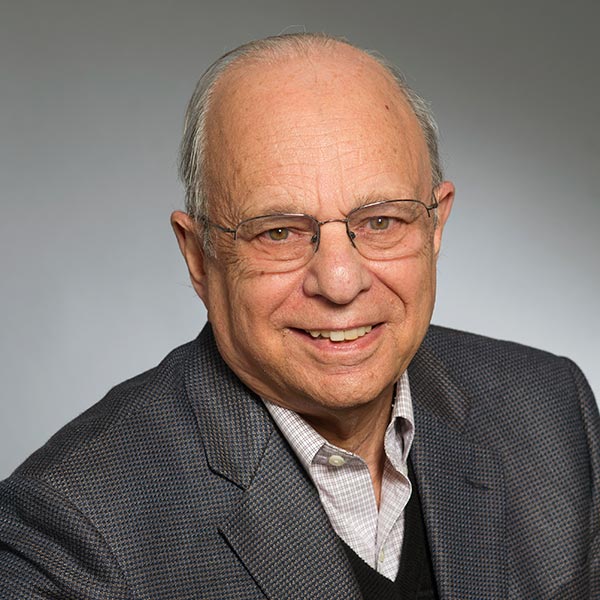Eugene H. Fram

Gene Fram is a Professor Emeritus now living in the swirls of Silicon Valley—only six miles from Stanford. Enjoying the perpetual sun, a few earthquake tremors and the changing lifestyle around him. He finds keeping current with the innovators is a challenge and the opportunities for continuous earning is a delight. Gene had 51 enjoyable years on the RIT faculty, and he continues to inspire and engage with the RIT community.
1. How Do You Teach Applied Critical Thinking?
My teaching objective, over my career, was to motivate students to go beyond recall and simple explaining when taking my classes. I wanted them to:
- Be able to apply the course content in new situations (e.g. with artificial intelligence),
- Draw connections among ideas presented in the course and other courses (e.g. marketing’s relations to behavioral sciences),
- Justify a stand or decision related to the course material (e.g., marketing & sales are the same processes—justify this statement?) and
- Produce new or original work.
To meet my objective, I:
- Delivered lectures in a Socratic mode,
- Designed assignments that challenged students to deal with ambiguous situations,
- Invited practitioners to class seminars and then asked students to analyze similarities or differences between the seminar discussions and the class content, and
- During the latter part of my career, I developed examinations with an open book/notes format.
2. Why Do You Think Applied Critical Thinking is Important in Your Domain?
It is not only important in my domain but in all domains involving professional and personal activity. People with critical thinking abilities are readily adaptable when they face situations in which there are no clear-cut answers, when they have to interact with professionals from other fields and are able to reflexively apply critical thinking to their professional and personal challenges.
3. Can You Share a Story Where Quality Applied Critical Thinking Was Key to Your Success?
In addition to my academic duties, I had a successful consulting practice, involving a wide range of businesses and nonprofit organizations that required me to interact with C-Suite executives.
Early in my career, I completed a research assignment for an industrial company, but my VP contact, at the time, did not reveal that the company earlier had a major consulting organization complete a similar project. At the project’s completion, he told me that my findings related well to those of the consulting firm. I continued as a consultant to the client company for over 15 years, through three changes of senior management.
4. How Do You Use Critical Thinking in Other Areas of Your Life Outside of RIT?
I had an eight-year-old auto that I had regularly serviced and was in excellent condition. By chance, I read about the safety features on the new cars. Should I buy a new auto? Critical thinking: I drive the California freeways at high speeds, and my age is advancing! Decision: Bought a new car with the safety features that I now find useful.
5. Any Last Critical Thoughts?
These thoughts are directed to any students who may peruse this Fram Focus.
Based upon the anonymous Fram Chair donor’s intent, a long-term RIT objective is to flow critical thinking experiences and its supporting variations (e.g. design thinking, logic, philosophy, etc.) through all curricula. By the time you graduate, make sure that you have a broad understanding of critical thinking in all its dimensions. Select courses that require the rigor of critical thinking. By the time you graduate, it will become a reflexive response that will be helpful in your professional and personal lives.
According to national studies and employer comments, only about 60% of college graduates are capable of tackling decisions that require critical thinking. RIT provides you with an opportunity to join the national 60% group. Be proactive and take advantage of it!